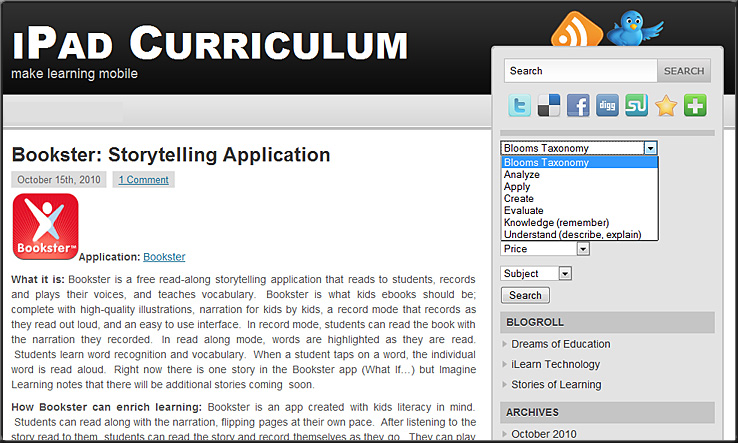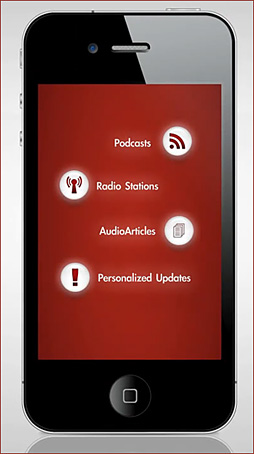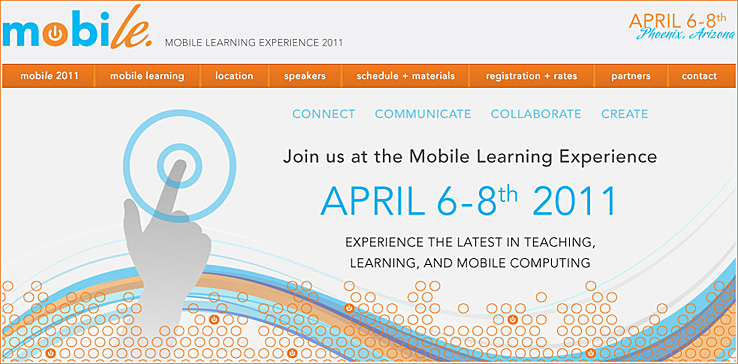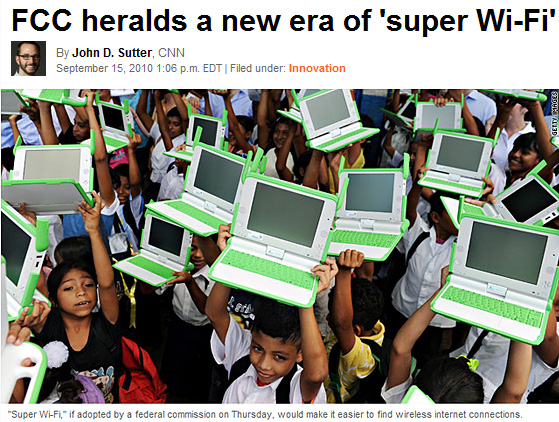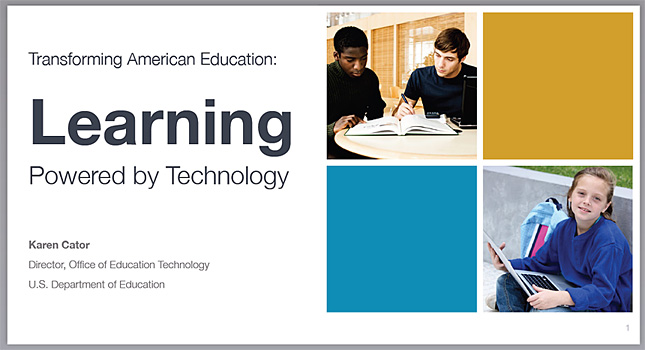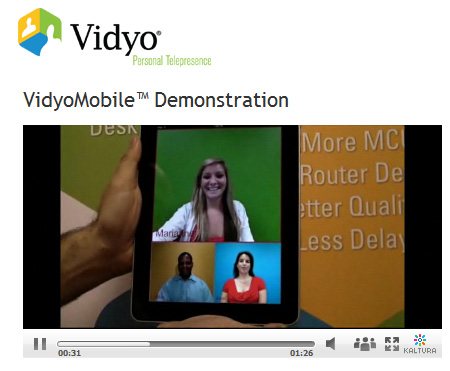Augmented reality and mobile learning — from interactyx.com by Jeff Roth
Let me pose this scenario:
Every day, you walk down the same street. You walk past the buildings, see the crowds and yawn. But on this day, you decide to use your smartphone and look down on the screen. At that moment, you see animation, tweets from people in the area, and you can respond. Interactivity meets reality. Social meets real time visibility. Engagement, enlightenment and excitement in an instance.
You wonder to yourself, can this work in the e-learning world? Specifically, m-learning? Can an app for the smartphone superimpose learning in a location or locations? Would it be possible to create a 3D environment in a real environment with people interacting? If yes, what would it be called?
Augmented Reality and it is happening as we speak…
IBM survey says mobile apps will dominate enterprise — from WSJ.com by Timonthy Hay
Consumers love tablet computers and smartphones and are finding novel uses for the many applications that run on them. But the devices are catching on in a significant way in the business world as well, according to a new survey from International Business Machines Corp., the company responsible for building and running much of the country’s enterprise computing systems.
After surveying 2,000 information-technology professionals in 87 countries, IBM found that more than half believe that within the next five years, more developers will be working on mobile applications and cloud-based architecture than traditional computing platforms for enterprise.
Mobile Learning for Education — from JISC
This document introduces the subject of mobile learning for education purposes. It examines what impact mobile devices have had on teaching and learning practices and goes on to look at the opportunities presented by the use of digital media on mobile devices.
Introduction
Mobile learning is considered to be the ability to use mobile devices to support teaching and learning. It is the ‘mobile’ aspect of mobile learning that makes it stand apart from other types of learning, specifically designing learning experiences that exploit the opportunities that ‘mobility’ can offer us.
This is because mobile devices have features and functionality for supporting learners. For example, podcasts of lectures can be made available for downloading. Learners are to expected to engage with these learning resources whilst away from the traditional learning spaces.
Although some will say that physical books count as mobile devices too, in this advice document we are concerned with electronic mobile devices.
There is a wide range of mobile devices on the market including laptops, PDAs, and ebook readers. However, we will be looking at the most popular mobile device – the mobile phone. Mass proliferation of mobile phones and the features and functionality they offer make the device stand out as an area ripe for exploration. Mobile phones are multi-function devices which are of interest due to their very nature of offering ‘mobility’, but also for their ability to create and consume digital media.
Kno breaks new ground with the world’s first single screen tablet textbook
Kno continues the pace of innovation in integrated learning with a smaller version of the Kno
TechCrunch Disrupt Conference — San Francisco, CA – September 27, 2010 –Kno, Inc., the groundbreaking tablet textbook and dynamic learning platform, today announced its further commitment to the education market with a single screen version of its tablet textbook. The single screen version extends the breakthroughs and functionality of the dual screen version announced in June.
“Kno fundamentally improves the way students learn,” said Osman Rashid, the CEO and Co-Founder of Kno, Inc. “We are driven to innovate in a category that has been static for too long. Even though the Kno pays for itself in 13 months, the smaller up front investment of the single screen version will allow more students to use our learning platform.”
Kno, short for knowledge, is a transformative learning platform that blends a touch-screen tablet, digital textbooks, course materials, note-taking, web access, educational applications, digital media, sharing and more into a powerful and engaging educational experience that is not available on any other tablet or eReader today.
“From day one, we designed the Kno with flexibility in mind,” said Babur Habib, CTO and Co-Founder of Kno, Inc. “We developed the product to have multiple configurations and meet different student needs. The single screen maintains the elegance of our fluid, intuitive interface while capturing the richness and ‘page fidelity’ of the original textbook.”
The company plans to ship both the single and two-screen tablet textbooks to consumers by the end of 2010. Pricing and pre-order announcements will be made in the coming months.
Also see:
What websites could learn from mobile (UX) — from uxbooth.com
Mobile applications and websites are hugely popular right now. Limitations of the mobile hardware has meant that certain design conventions need to be used to make them a success. Could some of these mobile conventions be used to improve your website design?
(CNN) — It’s more powerful than your current home network — able to leap through tall buildings from a single port.
Look, up in the sky.
It’s “SUPER Wi-Fi!”
At least that’s what U.S. Federal Communications Commission Chairman Julius Genachowski is calling a new class of bigger-faster-better internet connections, which could jump from fiction to reality after a commission vote on September 23.
Rise of the ‘Apps Culture’ — Pew Research Center Publications
Cell phone use in the U.S. has increased dramatically over the past decade. Fully eight-in-10 adults today (82%) are cell phone users, and about one-quarter of adults (23%) now live in a household that has a cell phone but no landline phone.
Along with the widespread embrace of mobile technology has come the development of an “apps culture.” As the mobile phone has morphed from a voice device to a multi-channel device to an internet-accessing mini-computer, a large market of mobile-software applications, or “apps,” has arisen.
Among the most popular are apps that provide some form of entertainment (games, music, food, travel and sports) as well as those that help people find information they need and accomplish tasks (maps and navigation, weather, news, banking). With the advent of the mobile phone, the term “app” has become popular parlance for software applications designed to run on mobile phone operating systems, yet a standard, industry-wide definition of what is, and is not, an “app” does not currently exist. For the purpose of this report, apps are defined as end-user software applications that are designed for a cell phone operating system and which extend the phone’s capabilities by enabling users to perform particular tasks.
The most recent Pew Internet & American Life Project survey asked a national sample of 1,917 cell phone-using adults if they use apps and how they use them. Broadly, the results indicate that while apps are popular among a segment of the adult cell phone-using population, a notable number of cell owners are not yet part of the emerging apps culture.
Vidyo bets on the iPad and iPhone for the future of video conferencing — from TechCrunch.com
Also see this demo:









